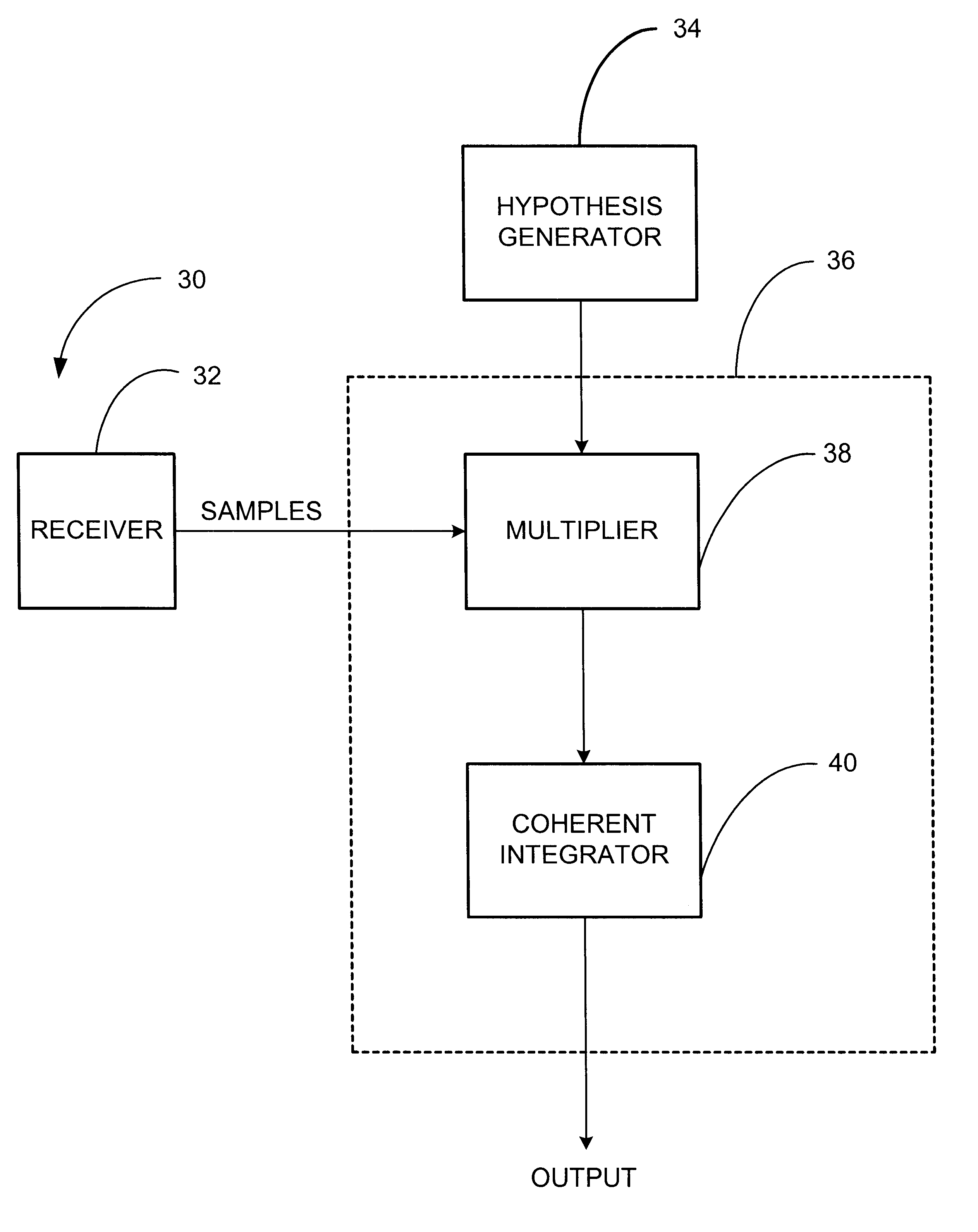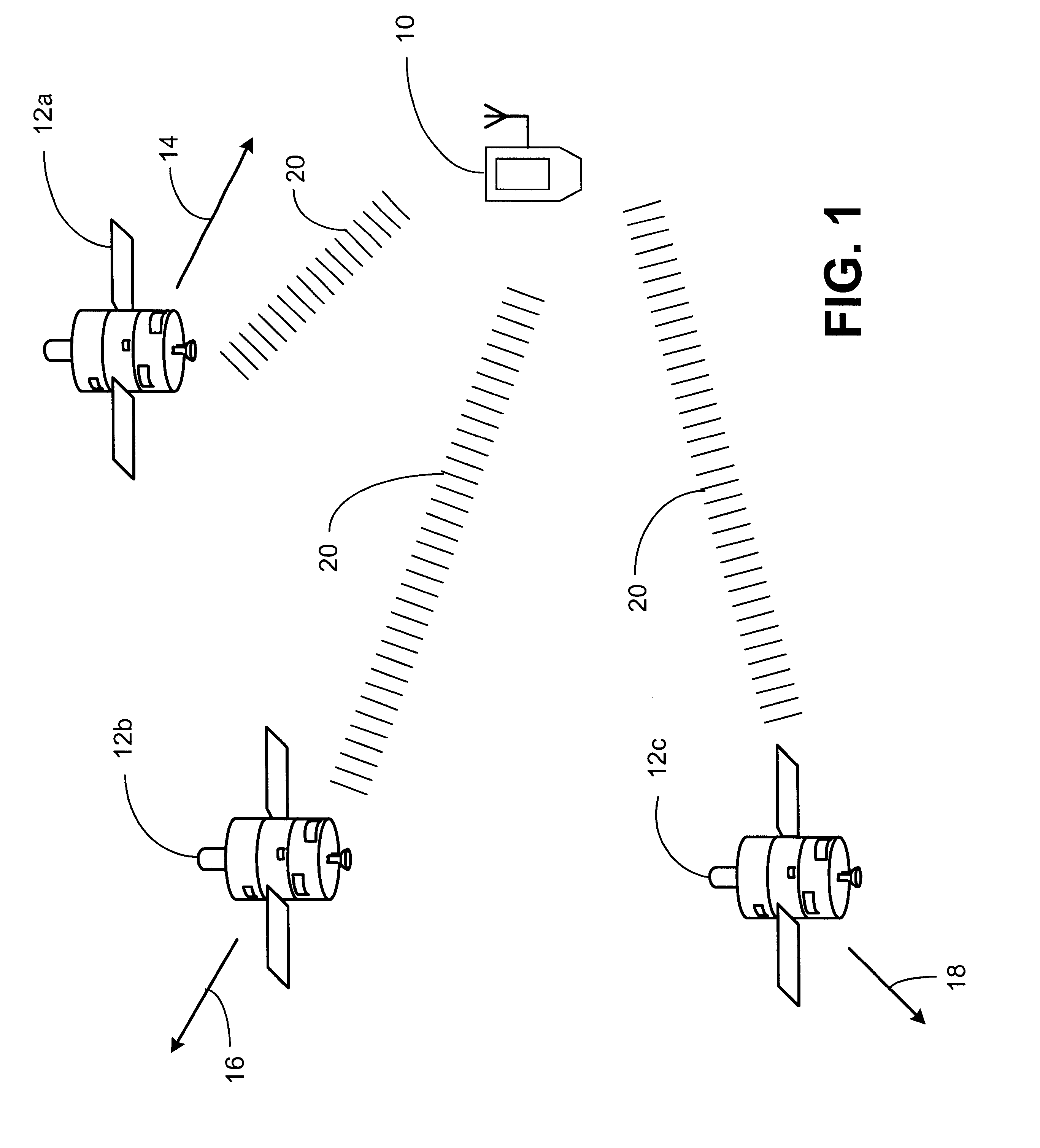Signal detector employing coherent integration
a signal detector and coherent integration technology, applied in direction finders, radio wave direction/deviation determination systems, instruments, etc., can solve the problems of data collection and carrier tracking no longer being possible, the magnitude of noise present in each value accumulates incrementally in the final sum, and the power consumption of the receiver is also dramatically increased
- Summary
- Abstract
- Description
- Claims
- Application Information
AI Technical Summary
Benefits of technology
Problems solved by technology
Method used
Image
Examples
Embodiment Construction
matched filter chip combines selected functionality of the sampling circuitry 308, the timing circuitry 307, and the matched filter 310 of FIGS. 8 and 10. In one implementation, the processor has additional GPS-specific circuits, such as tracking channels for continuously tracking a number of GPS satellite signals. Typically, the processor includes at least an embedded microprocessor with an external bus. In one configuration, the processor views the matched filter chip as a memory mapped peripheral. It issues commands to the matched filter chip, and retrieves results after it has completed processing for a given set of commands. An RF receiver chip embodies the functionality of the GPS radio receiver 300 of FIG. 4. Additional details regarding this implementation example are available in U.S. Pat. No. 6,044,105, and in U.S. Pat. No. 6,304,216, previously incorporated herein by reference.
In order to perform coherent integration over intervals greater than 20 ms, two things are requi...
PUM
 Login to View More
Login to View More Abstract
Description
Claims
Application Information
 Login to View More
Login to View More - R&D
- Intellectual Property
- Life Sciences
- Materials
- Tech Scout
- Unparalleled Data Quality
- Higher Quality Content
- 60% Fewer Hallucinations
Browse by: Latest US Patents, China's latest patents, Technical Efficacy Thesaurus, Application Domain, Technology Topic, Popular Technical Reports.
© 2025 PatSnap. All rights reserved.Legal|Privacy policy|Modern Slavery Act Transparency Statement|Sitemap|About US| Contact US: help@patsnap.com



